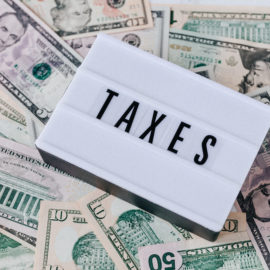

This article is an excerpt from the Shortform book guide to "The Wealthy Barber" by David Chilton. Shortform has the world's best summaries and analyses of books you should be reading.
Like this article? Sign up for a free trial here .
Are you saving for retirement? Do you know what you can count on after you retire? What’s your plan?
David Chilton says that part of your overall financial plan should be saving for retirement. He provides four reasons why retirement planning is important and discusses four types of retirement plans: 401(k), IRA, Roth IRA, and Keogh Plan.
Keep reading to learn more about smart retirement planning.
Retirement Planning
In addition to investing 10% of your income for long-term growth, you should also be saving for retirement. According to Chilton, if you don’t save for retirement during your working years, you probably won’t have enough money to survive on during your retirement years. Here’s why retirement planning is important:
1) Retirement brings new expenses. While it’s true that expenses can be lower in retirement (for example, your mortgage may be paid off and your children will be grown and no longer financially dependent on you), it’s also true that retirement can bring new expenses, such as travel, expensive hobbies, medical costs, and caring for dependent parents.
2) Social Security is insufficient to live on. When you retire, you’ll get some Social Security benefits, but you’ll need to make up the difference between that amount and your previous income (as well as take into account inflation, which is a retired person’s number one enemy).
3) Social Security is uncertain. Plus, the rules and regulations governing Social Security might change, decreasing its value or the likelihood that you’ll receive it.
4) Pensions may be insufficient to live on. If you have a pension plan, the amount you receive every month might be capped, so it probably won’t be enough to live on even combined with Social Security benefits (though certain jobs have better pension plans than others).
A major benefit of many retirement plans is that the money you put into the plan can continue to grow on a tax-deferred basis until you withdraw it. With some plans, such as a Roth IRA, your tax advantage comes not before retirement but during it. These tax and compound interest benefits offset the difficulty of saving additional money for retirement.
Because there are many different types of retirement plans, it can be helpful—and, if you’re self-employed, it’s a good idea—to consult an accountant, financial planner, or lawyer to help you decide which type of plan best suits your needs.
| Retirement Savings Often Don’t Cover Long-Term Care Chilton mentions medical costs in retirement, but he doesn’t discuss one of the biggest potential retirement costs: long-term care. People who suffer from a debilitating illness may require assistance with the tasks of daily living, in their own home or in a facility such as a nursing home. Paying for such care can quickly drain your savings; costs run in the tens to hundreds of thousands annually. There are various methods of paying for long-term care, including long-term care insurance, personal savings and investments, health savings accounts, and Medicaid, which is only available to those living below the federal poverty line. If your retirement income and assets are substantial enough, you may be able to pay for long-term care costs out of pocket. If, on the other hand, you don’t have any retirement savings at all, you’ll quickly go into debt. |
401(k) Plan
Chilton recommends a 401(k) retirement plan as the best choice for most Americans. (A similar option for teachers is the 403(b) plan.) In a 401(k) plan, your employer matches your contributions up to a certain amount every year, pre-tax. The law sets a limit on how much you can contribute to a 401(k) plan, but this cap is indexed to inflation, so it increases on a yearly basis. Employer matching may be as close as you can get to free money.
(Shortform note: While a 401(k) plan is a great choice for retirement saving, unfortunately it’s not available to many Americans. Only 67% of employers offer a 401(k) or similar plan at all, and of those, 18% don’t provide any matching. Those who do provide matching typically match an average of 4.5% of an employee’s contribution. And of course, you can’t have a 401(k) if you’re not an employee. Even without matching, however, there are significant tax advantages to a 401(k), and it has a higher contribution limit than a traditional or Roth IRA. As of 2022, the limit was $20,500.)
Individual Retirement Account (IRA)
To contribute to an IRA, you must have earned income. As with a 401(k), there is a maximum contribution amount. Your contributions are likely tax-deductible, depending on your income and on whether you or your spouse is covered by any other type of retirement plan.
If you withdraw money from an IRA prior to age 59 ½, you have to pay standard tax on that amount plus a 10% penalty tax. If you withdraw money from an IRA after retirement, withdrawals are taxed at your standard income tax rate.
As with any investment, you can invest your IRA in mutual funds (ownership investments) or in “loanership” investments such as CDs (certificates of deposit) and bonds. The former generally perform better, but Chilton says that an IRA is one place where the latter, more conservative approach can also work well, because your money can compound year after year, unencumbered by taxes.
Roth IRA
With a Roth IRA, your contributions are not tax-deductible, but withdrawals during retirement are tax-free. In other words, the main difference between a Roth IRA and a traditional IRA is the timing of the tax advantage.
In order to contribute to a Roth IRA, you must meet certain income eligibility requirements.
(Shortform note: The contribution limit for traditional or Roth IRAs for 2022 was $6,000.)
Keogh Plan
A Keogh plan is a type of retirement plan for people who are self-employed, either part time or full time. Like a traditional IRA, contributions to a Keogh plan are tax-deductible and growth within the plan is tax-deferred. You can contribute more to a Keogh plan than you can to an IRA; how much depends on which type of Keogh plan you choose.
(Shortform note: While various types of retirement plans exist, Chilton notes that millions of Americans nonetheless retire near the poverty line. More recent statistics show that approximately 8.9% of Americans aged 65 and over were living in poverty in 2019. In addition, approximately half of Americans ages 55 to 66 have no personal retirement savings at all. Gender and marriage affect whether a person has retirement savings: 60% of those who have never been married have no retirement savings, while this number is only 35% for those who have been married once. Women are about 3% more likely than men to have no retirement savings.)

———End of Preview———
Like what you just read? Read the rest of the world's best book summary and analysis of David Chilton's "The Wealthy Barber" at Shortform .
Here's what you'll find in our full The Wealthy Barber summary :
- A guide to becoming financially successful by following simple principles
- Why you might not need to buy life insurance
- Why you should only buy a house if it’s right for you






